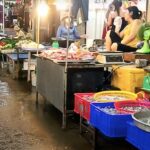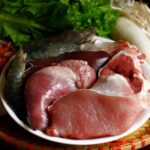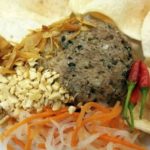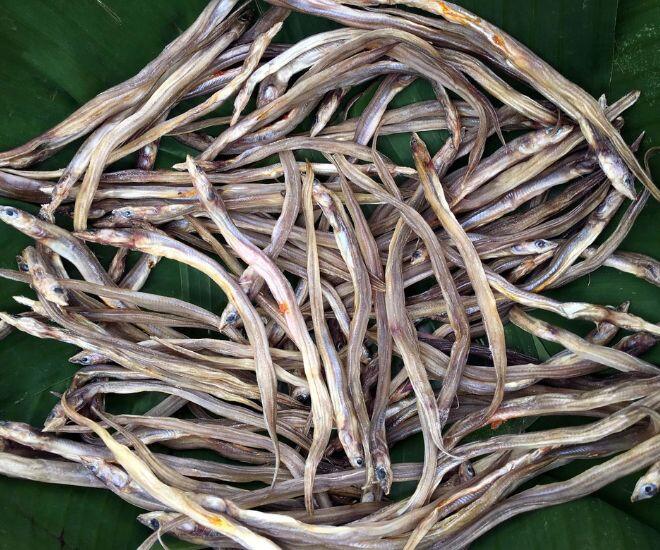
Silver needle fish, also known as sùn sịn fish or lãi fish, belongs to the sea eel family. These fish have small, round, elongated bodies, similar in size to a pair of chopsticks, but they contain a generous amount of translucent, aromatic fat akin to that found in freshwater eels and central Vietnam’s river eels.
Adult silver needle fish typically weigh half a kilogram or more, and their meat is firm and sweet. They are usually found in the deep sea, but during their spawning season, they swim in schools into the estuaries of southern Vietnam’s rivers, making them easier for fishermen to catch.
Phước Hải in Bà Rịa-Vũng Tàu, Cần Giờ in Ho Chi Minh City, and Gò Công Đông in Tiền Giang are famous for their abundant silver needle fish populations. The most common fishing methods involve trawling or laying bottom nets in the larger river mouths. Due to their migratory nature, silver needle fish are most abundant from the seventh to the tenth lunar month. During this time, the river mouth markets of Cần Thạnh in Cần Giờ and Vàm Láng in Tiền Giang bustle with buyers and sellers. Wholesale prices for fresh fish range from 50,000 to 70,000 VND per kilogram, a reasonable price for a natural fish source.
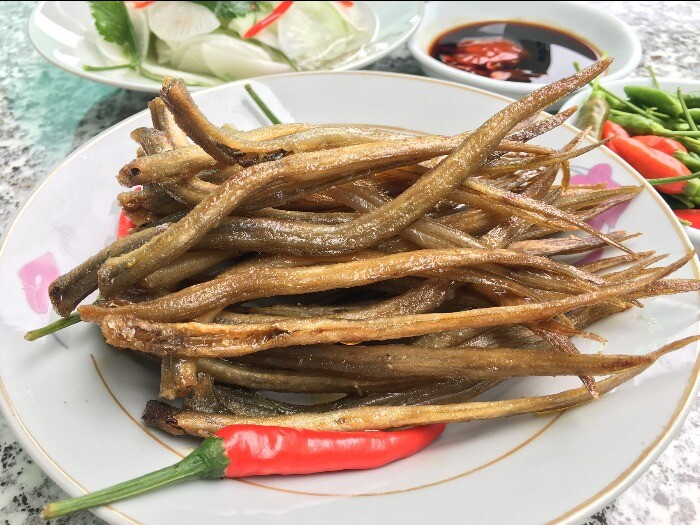
People living near the river mouths have the advantage of easy access to fresh fish, which has led to the establishment of many fish processing facilities. After being cleaned, the fish are sun-dried for one to two days to create a semi-dry product that retains the natural sweetness and can be stored for longer. Retail prices in local markets range from 120,000 to 150,000 VND per kilogram. Notably, during this season, many female silver needle fish carry fresh yellow roe. The roe has a moderate fattiness that is appealing without being overwhelming, like crab roe or sea urchin roe.
Since silver needle fish are naturally delicious, they require minimal seasoning during preparation, which is why they are considered a “gift from the sea” and a “blessing from nature.” The locals typically prepare this fish using simple methods that result in captivating flavors.
The most popular dish is grilled fish. After thawing, the semi-dry fish is rinsed with diluted salt water, patted dry, and grilled in an electric oven or an air fryer. The fish is cooked to perfection when it turns a delicate pinkish hue. The dish is best enjoyed with a special dip made by pounding green, unripe mangoes and mixing them with fish sauce, a touch of sugar, and some finely chopped bird’s eye chilies. The combination of the mango’s tangy sweetness, the natural sweetness of the fish, and the chilies’ spicy kick creates a unique and addictive flavor profile that is hard to resist.
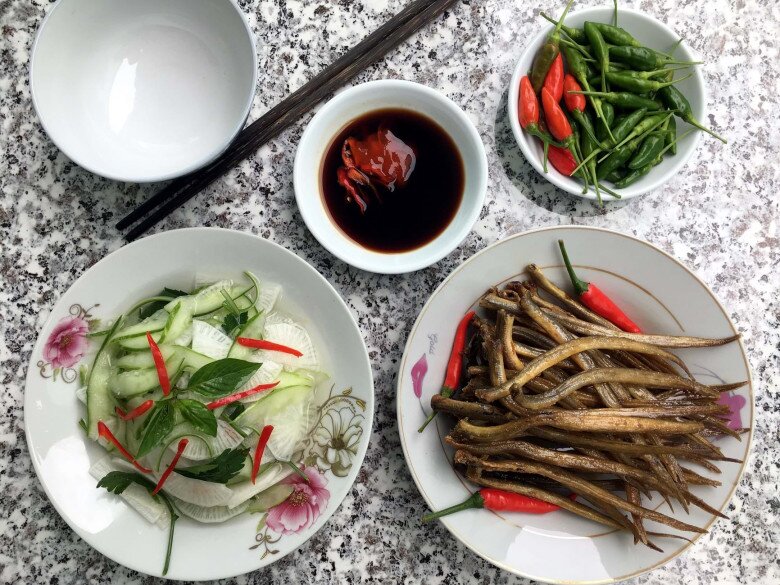
If unripe mangoes are not available, you can substitute soy sauce mixed with chili paste. While simple, this dish is full of flavor and appeals to many palates. Alternatively, silver needle fish can be paired with a cucumber and radish salad, enhanced with thinly shaved celery, vinegar, and sugar. The crisp, slightly sour, and spicy salad helps balance the richness of the semi-dry fish, making for a well-rounded meal.
In addition to grilling, silver needle fish can be prepared in various ways, such as deep-frying or braising with peppercorns. A tip shared by many home cooks is to coat the semi-dry fish with cornstarch or bread crumbs before frying. After about 10 minutes, when the coating has adhered, fry the fish over low heat in vegetable oil or lard. The outer layer of starch or crumbs helps retain the fish’s natural oils, resulting in a crispy dish that still boasts the distinctive flavor of silver needle fish.
Semi-dry silver needle fish can be stored in the freezer for about a month and a half. Because these fish are naturally fatty, prolonged storage may cause the development of a strong, bitter taste, making them less appealing. Therefore, it is advisable to purchase only the amount needed for immediate consumption. Nowadays, in addition to being available in coastal markets, this semi-dry fish is also widely sold online. A simple Google search for “khô sùn sịn” or “khô cá lãi trứng Gò Công” will lead you to numerous suppliers.
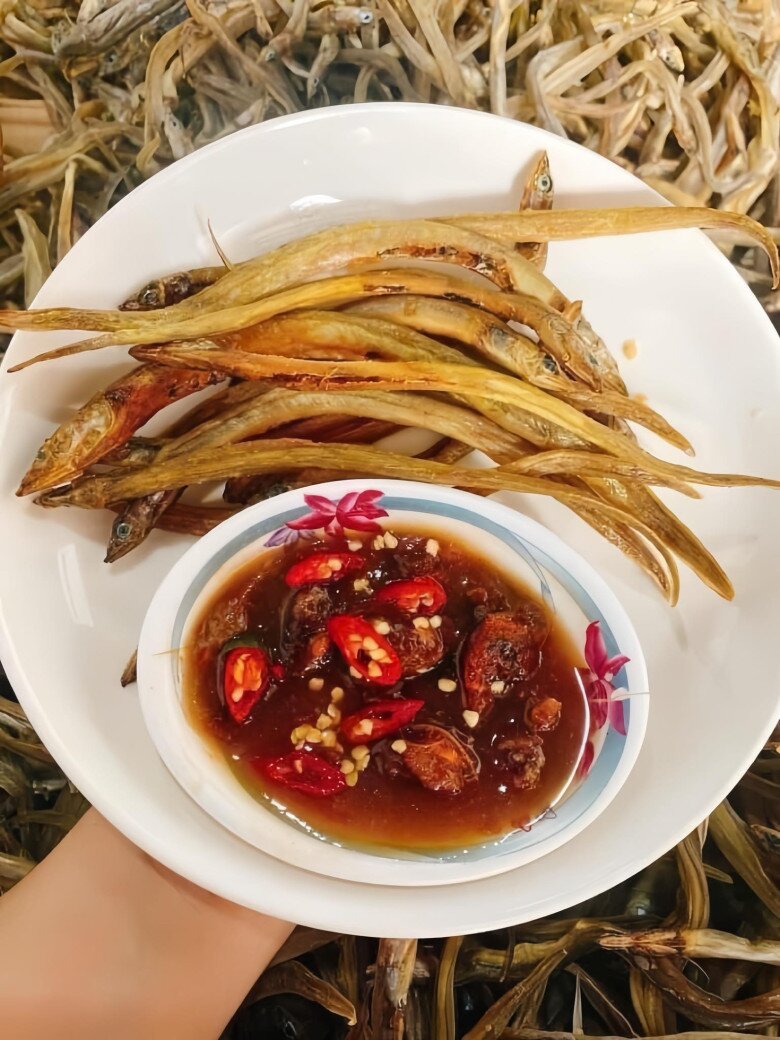
Semi-dry silver needle fish is not only a staple for coastal residents but has also gained popularity as a specialty sought after by tourists as a unique souvenir from their travels. Savoring a perfectly grilled piece of semi-dry fish dipped in a spicy mango sauce allows diners to experience the essence of the southern sea. Some connoisseurs even compare the richness of silver needle fish roe to that of other seafood delicacies, declaring it an irresistible treat.
Many visitors to the coastal villages of Cần Giờ, Gò Công Đông, and Phước Hải make sure to buy a few kilograms of semi-dry fish to take home as gifts. For the locals, this fish is not only a valuable food source but also a means of livelihood during the fishing season. For tourists, semi-dry silver needle fish represents a taste of the region, contributing to a complete culinary experience in southern Vietnam.
The Half-Century-Old Market in Dong Nai: A Culinary Gateway to Hue’s Delights in the Heart of the Mekong Delta
Over half a century since its establishment, Cho Quang Bien has become more than just a bustling trading hub; it is a sanctuary for Hue’s soul in the heart of the Mekong Delta. Here, the cultural and culinary traditions of Central Vietnam are preserved and creatively evolved, offering a unique glimpse into the region’s rich heritage.
The Savory Secrets of Saigon: A Mother’s Guide to the Perfect Bowl of Vietnamese Noodle Soup
Hủ tiếu Nam Vang is a beloved Vietnamese noodle soup that stands out from the rest with its delicate rice noodles, rich and flavorful broth, and a delightful assortment of toppings. The soft and smooth noodles perfectly complement the hearty broth, which is carefully prepared to achieve a perfect balance of flavors. The toppings, such as shrimp, quail eggs, and beef offal, elevate the dish with their unique textures and tastes, creating an irresistible and indulgent culinary experience.


























